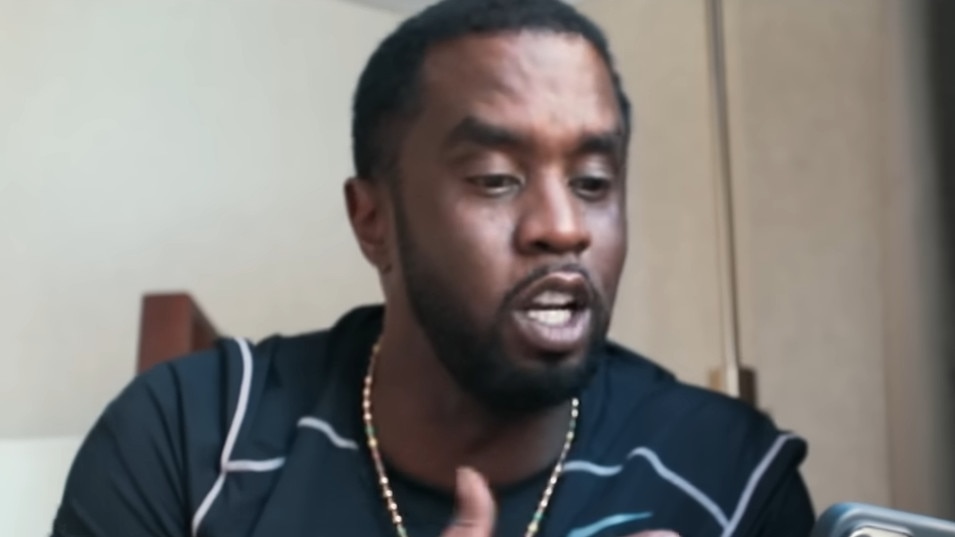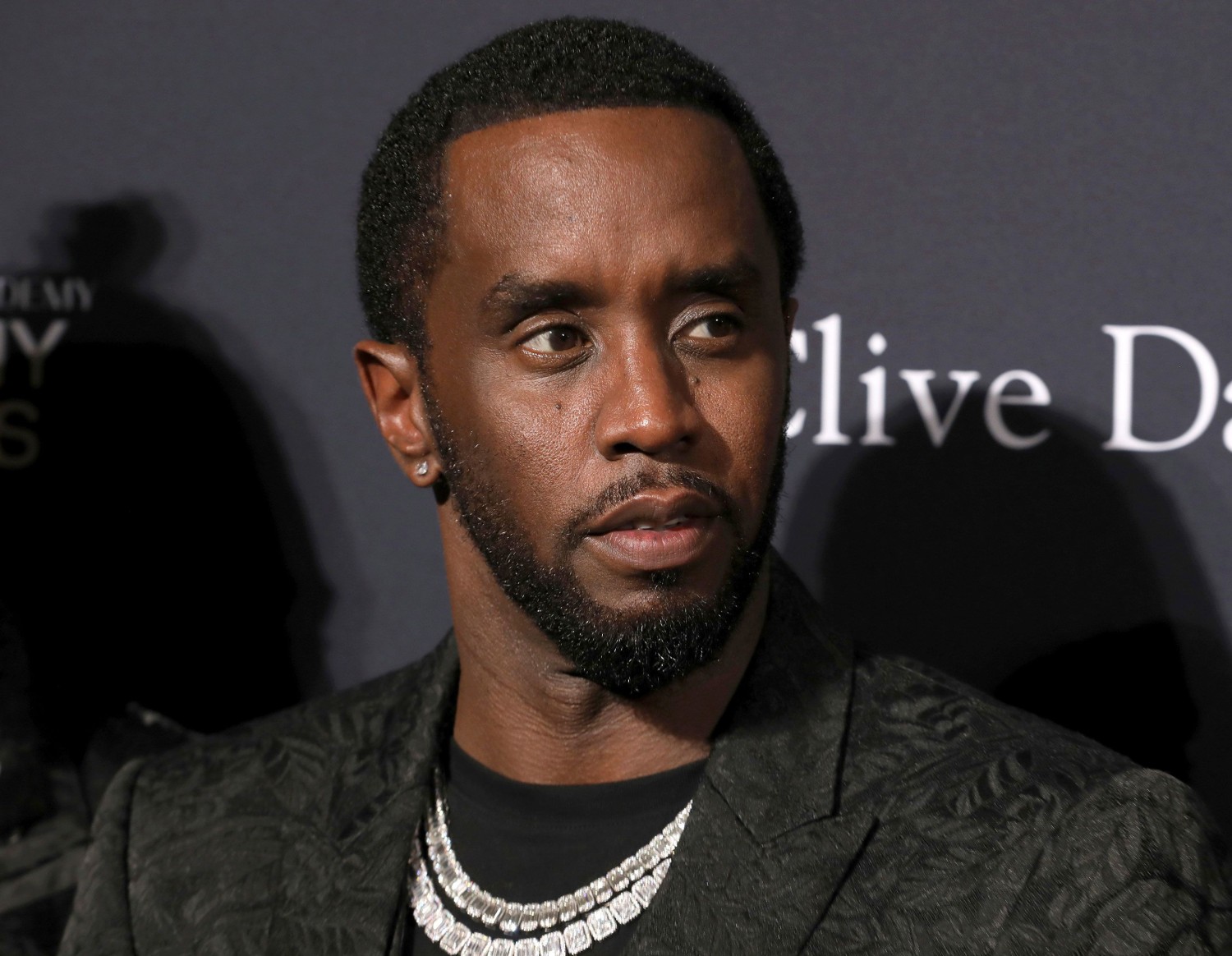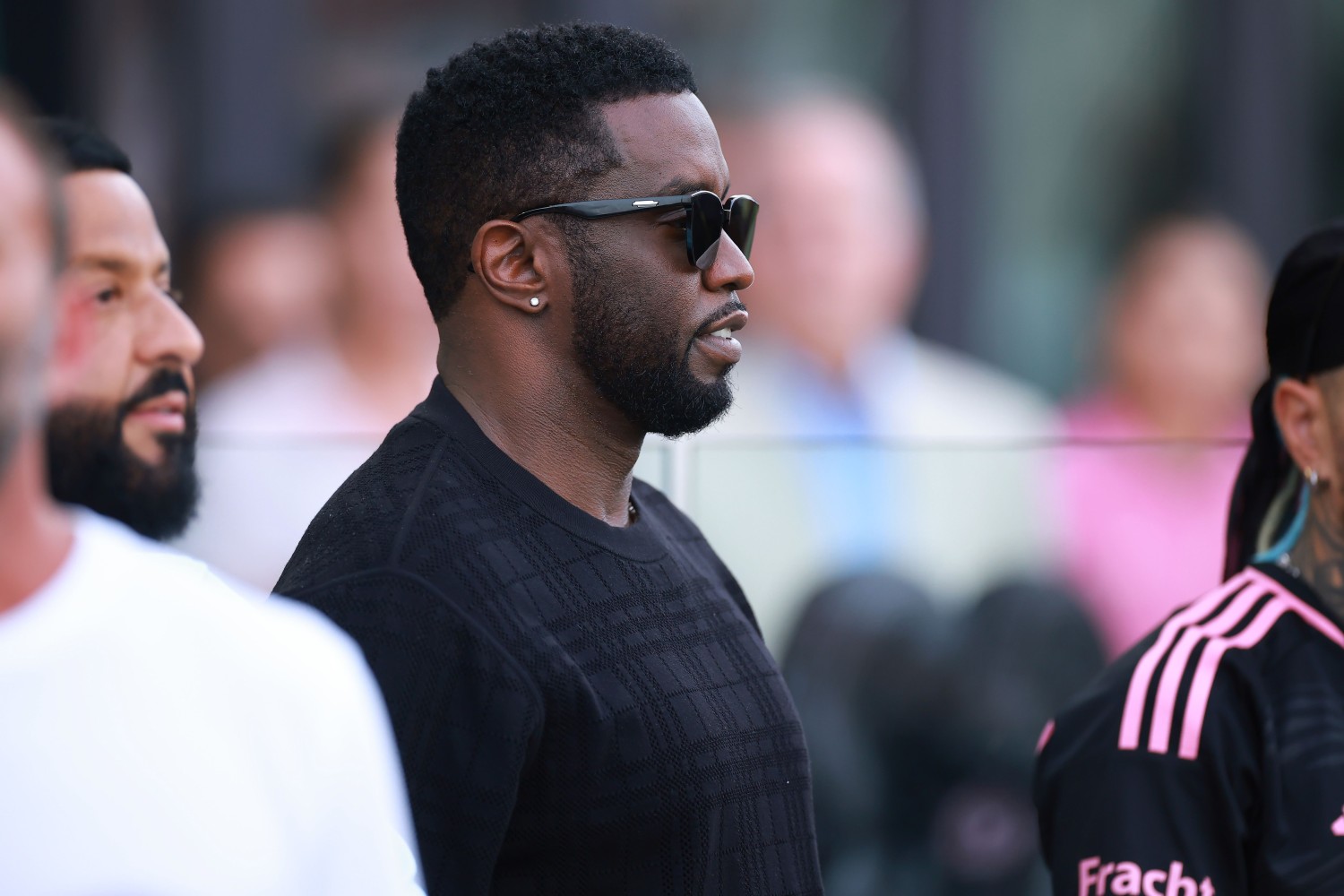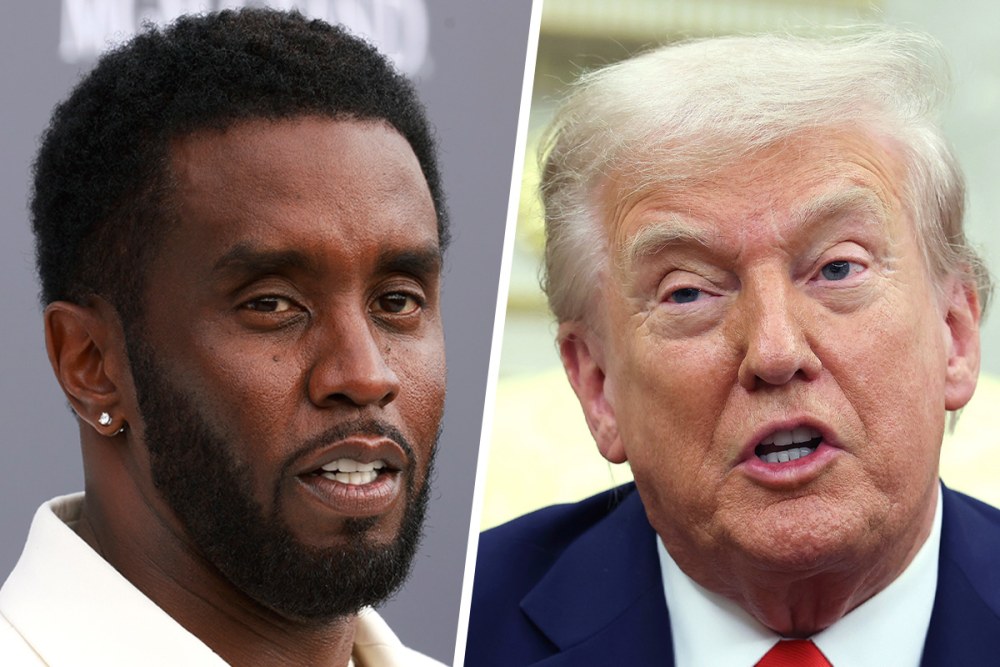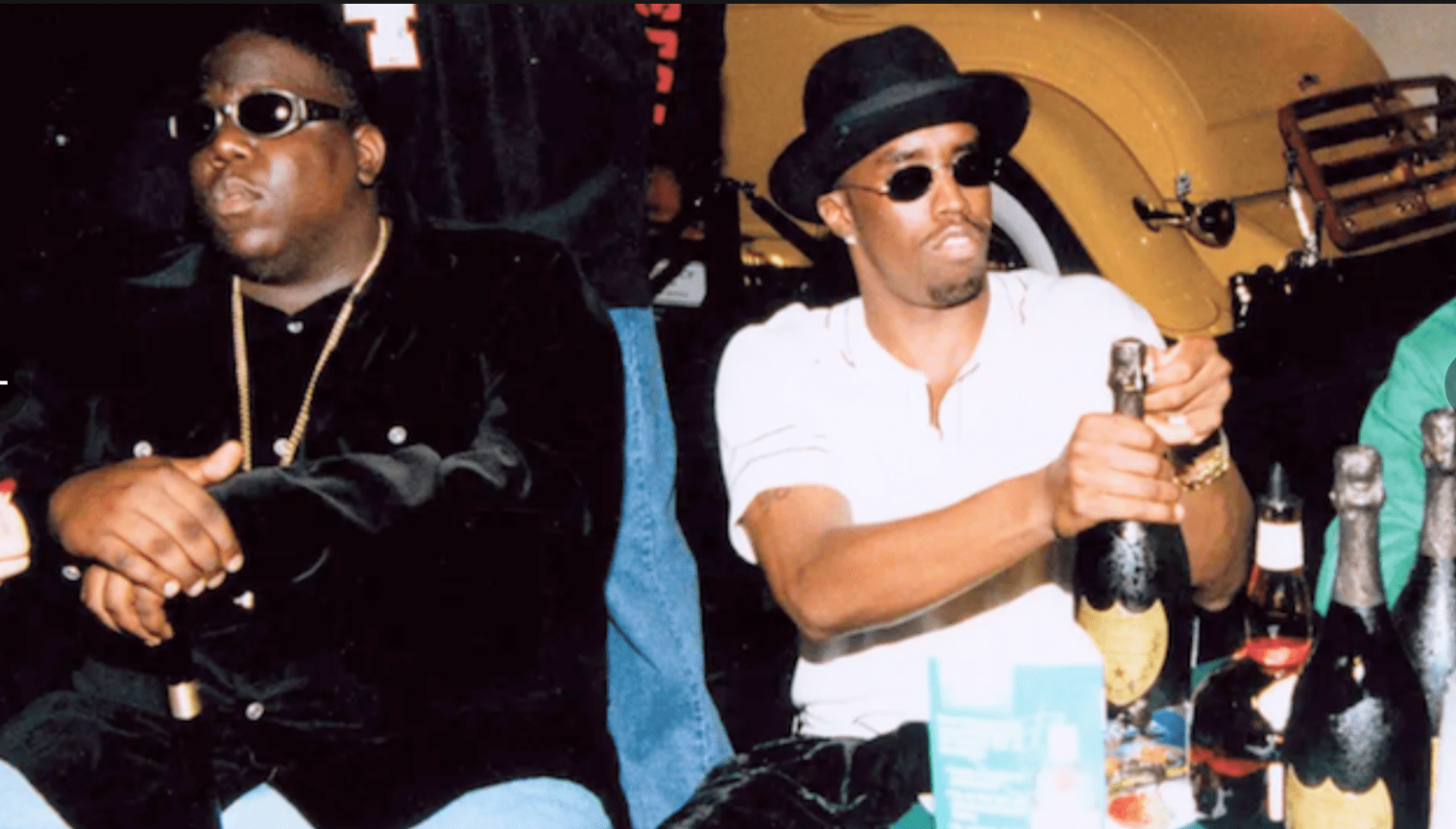
This article is more than
1 year oldSean Combs’s White Parties Were Edgy, A-List Affairs. Were They More?
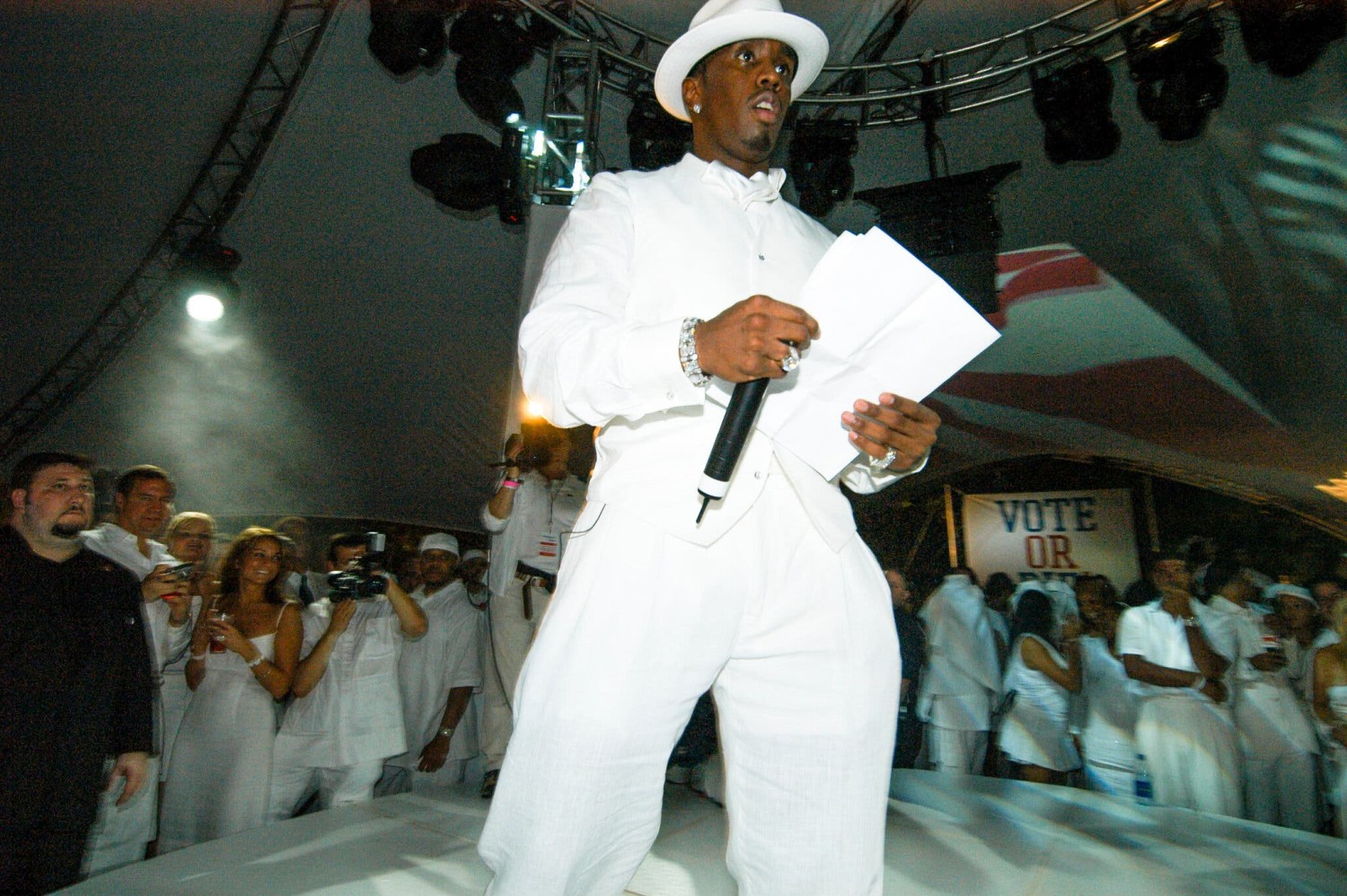
The events helped the music mogul raise his profile. But one woman who worked at them has said in court papers that the parties had a dark side, too.
In the 2000s, few events held the cultural cachet of the White Party thrown by Sean Combs — fetes in Beverly Hills, the Hamptons and other playgrounds of the rich, studded with famous names and fabulous tableaus.
At the 2009 party, Demi Moore made the scene with Lil’ Kim, dancers gyrated in giant plastic balloons alongside tottering stilt walkers, and Ashton Kutcher swung, Tarzan-like, across a swimming pool as models in white bikinis lounged beside it.
And at the center of it all was Mr. Combs, the billionaire hip-hop mogul also known as Puff Daddy and Diddy, invariably toasting the scene with a glass of Cîroc vodka, and welcoming comparisons of his revels to those of lore.
“Have I read ‘The Great Gatsby’?” Mr. Combs once told The Independent. “I am the Great Gatsby!”
Today, Mr. Combs’s fortunes again invite comparison to Gatsby, though now through scandal. Prosecutors say Mr. Combs enlisted employees, enablers and prostitutes to stage far darker soirees than White Parties called “freak-offs” — drug-heavy, sometimes days-long hotel parties during which investigators say he abused and coerced participants into sexual acts, which he sometimes filmed and masturbated to.The criminal indictment unsealed in Manhattan federal court this month has invited something of a reappraisal of the White Parties for some of those who reveled or worked at them. Were they merely innocuous, press-conscious branding events at which to see and be seen? Or was there, beyond the all-white facade, a darker element?
Indeed, a recent lawsuit claims misdeeds occurred at those events, too: In July, Adria English, who was hired by Mr. Combs to work a series of White Parties in the mid-to-late 2000s, sued him, asserting she was plied with drugs and ecstasy-laced liquor at the events, and commanded to have sex with certain guests, making her into “a sexual pawn.” Jonathan Davis, a lawyer for Mr. Combs, denied in July that his client had ever “sexually assaulted or sex trafficked anyone.”


In a statement on Saturday from Mr. Combs’s representatives, his camp denied that any wrongdoing had occurred at the White Parties.
“It’s disappointing to see the media and social commentators twist these cultural moments into something they were not,” the statement said. “Shaming celebrities who attended, taking video clips and photos out of context, and trying to link these events to false allegations is simply untrue.”
The White Parties are not mentioned in the three-count indictment, which charges Mr. Combs, 54, with racketeering conspiracy, sex trafficking and transportation to engage in prostitution. He has pleaded not guilty, and his legal team has cast his prosecution as an example of “unjust prosecution” of consensual behavior.
“He is an imperfect person, but he is not a criminal,” said Marc Agnifilo, a lawyer for Mr. Combs, adding, “These are the acts of an innocent man with nothing to hide, and he looks forward to clearing his name in court.”
Nonetheless, the charges have thrust Mr. Combs’s parties back into the spotlight, as hundreds of photos of celebrities rubbing shoulders with the musician have resurfaced, including Hollywood A-listers like Leonardo DiCaprio, the writer Salman Rushdie, and Donald J. Trump, an indication of Mr. Combs’s broad reach into worlds of music, movies, fashion and more.
Few of the attendees have spoken in recent days about what it was like inside a Combs party, though celebrities of all stripes have over the years recounted what it was like to hang out with him, sometimes declining — with smiles — to provide more details.
No invitation, perhaps, was more coveted than one to a White Party, which Mr. Combs began to stage in the late 1990s. They were lavish, orchestrated events that seemed to be as much about public relations as carousing. Veteran celebrities mixed with of-the-moment stars and the high-society set at gatherings that often had civic-minded causes. The dress code and décor — all white — suggested a certain pristine simplicity.
“There were the beautiful people, but it also was a lot of Hamptons people, and young people, nightclub kids,” said Patrick McMullan, the nightlife photographer, who attended some of the parties. “They all wanted to be part of that scene.”
In her 114-page suit — which included a “trigger warning” because of its graphic nature — Ms. English, who said she worked at several White Parties in the mid-to-late 2000s, suggested the glamour was a facade. At one party, she said that Mr. Combs asked her to wear a black dress to indicate to other guests that she was available for sexual encounters. She said she was later paid $1,000 for an encounter with a guest, according to the court papers.


Ms. English, who had previously worked as an erotic dancer and adult film actress, also accused Mr. Combs in her suit of allowing other unidentified men to sexually assault her — and filming the acts — while she was unconscious at White Parties in New York, and his home in Star Island, Fla.
“The true nature of her employment at the White Parties was grotesque, inexcusable, exploitative and criminal,” the suit says.
In responding to the suit in July, Mr. Combs’s lawyer, Mr. Davis said: “We live in a world where anyone can file a lawsuit for any reason and without any proof. Fortunately, a fair and impartial judicial process exists to find the truth and Mr. Combs is confident he will prevail against these and other baseless claims in court.”
One veteran of the Hamptons social scene said the accusations against Mr. Combs have led some to revisit their own experiences of attending a White Party.
“Everybody that could go, went,” said R. Couri Hay, a New York City publicist who has also long written about the society scene in the Hamptons, though he said he now wondered “what was happening behind closed doors.”
Mr. Hay agreed that the “public-facing” White Parties were meant to boost and promote Mr. Combs’s image. “This was Puffy's Met Gala, this was Puffy’s Oscars, this was Puffy’s Grammy Awards,” he said.
White Parties usually ran from daytime to the wee hours. Some guests brought their children — as did Mr. Combs — who gobbled free ice cream alongside stars. Brand-name sponsors plastered their names on white-carpeted backdrops and gave away swag. Invitees sometimes included, alongside high-profile celebrities and friends, some lesser-known models, at times recruited from New York City catwalk shows.
Once guests arrived, sometimes brought from Manhattan by the busload, waiters in white tuxedos circulated with champagne. Pains were taken to make sure the White Parties were well received in the Hamptons, said Nicholas Kraus, whom Mr. Combs hired to conduct diplomacy with his Long Island neighbors, including offering them limo rides and dinners at fancy restaurants on Mr. Combs’s dollar, to stave off noise complaints.
No expense was spared, no detail overlooked: In 2004, Mr. Combs brought an original copy of the Declaration of Independence to a July 4 White Party in Bridgehampton, a borrowed relic — from the television producer Norman Lear — that was accompanied by a team of burly security officers.
“I promise not to spill champagne on it,” Mr. Combs joked.
That fete — which was promoted by Sony and also hosted by Jay-Z and Paris Hilton — offered a buffet of upper-crust entertainment options, including badminton, horseback riding and croquet. It doubled as a kickoff event for a get-out-the-vote organization Mr. Combs had founded, Citizen Change, part of an effort he described to “make this election the hottest, most sexiest thing ever.”
At the 2009 party in Beverly Hills, the settings and stagecraft was equally sumptuous, with scores of white ottomans and a custom-built trellis over the pool, wrapped in white gauze, from which Mr. Kutcher would later swing. The party promoted Malaria No More, a nonprofit that provides mosquito netting and other services in malarial zones. The dress code was strict, and enforced.


“White meant white,” said T. Scott Case, the former chief executive officer of Malaria No More. “Don’t be showing up in eggshell.”
Some of the White Parties also had a sensual vibe. Models wore angel wings, and occasionally went topless. Photos from the bash in 1998 show Mr. Combs pouring champagne over two half-naked women.
As the celebrations transitioned from day to night, guests and hired models sometimes ended up in the pool, fully or partially naked, some attendees said.
Jay Blaze, a recording artist whose music was featured on Mr. Combs’s reality competition show “Making the Band,” attended the 2009 party, after showing up uninvited. Mr. Combs let him in, however, on the condition that he go on to “do good things for people.”
As the sun set, Mr. Blaze said he grew uncomfortable. Drunk men bellowed at models in the pool, he said, groping or preventing them from getting into dry clothes. No one intervened.
“The response was: ‘It’s a hip-hop party, it’s a Diddy party, it’s the White Party,’” Mr. Blaze recalled.
At another White Party, held in 2006 at Nikki Beach, the famed beachside club in St. Tropez, guests encountered erotically charged photos, including two tongues entwined and Mr. Combs’s hand over a woman’s bikini bottom. Another photo showed the star shirtless, with his signature sunglasses and a pair of jewel-encrusted crosses dangling over his glistening chest. A yacht bobbed offshore.
Mr. Combs discontinued his White Parties after the Beverly Hills event in 2009; his representatives said that part of the reason was that the mogul was spending less time in the Hamptons. They added that the parties were “iconic, a true convergence of hip-hop, Hollywood and Black excellence,” with “an endless stream of people vying to attend.”
Now, however, after being denied bail, Mr. Combs is being held at the Metropolitan Detention Center in Brooklyn. He could face life in prison if convicted of racketeering conspiracy; the other two charges also carry the potential for lengthy prison terms.

When we learn of a mistake, we acknowledge it with a correction. If you spot an error, please let us know at nytnews@nytimes.com.Learn more
Jesse McKinley is a Times reporter covering upstate New York, courts and politics. More about Jesse McKinley
Sarah Maslin Nir is a Times reporter covering anything and everything New York ... and sometimes beyond. More about Sarah Maslin Nir
